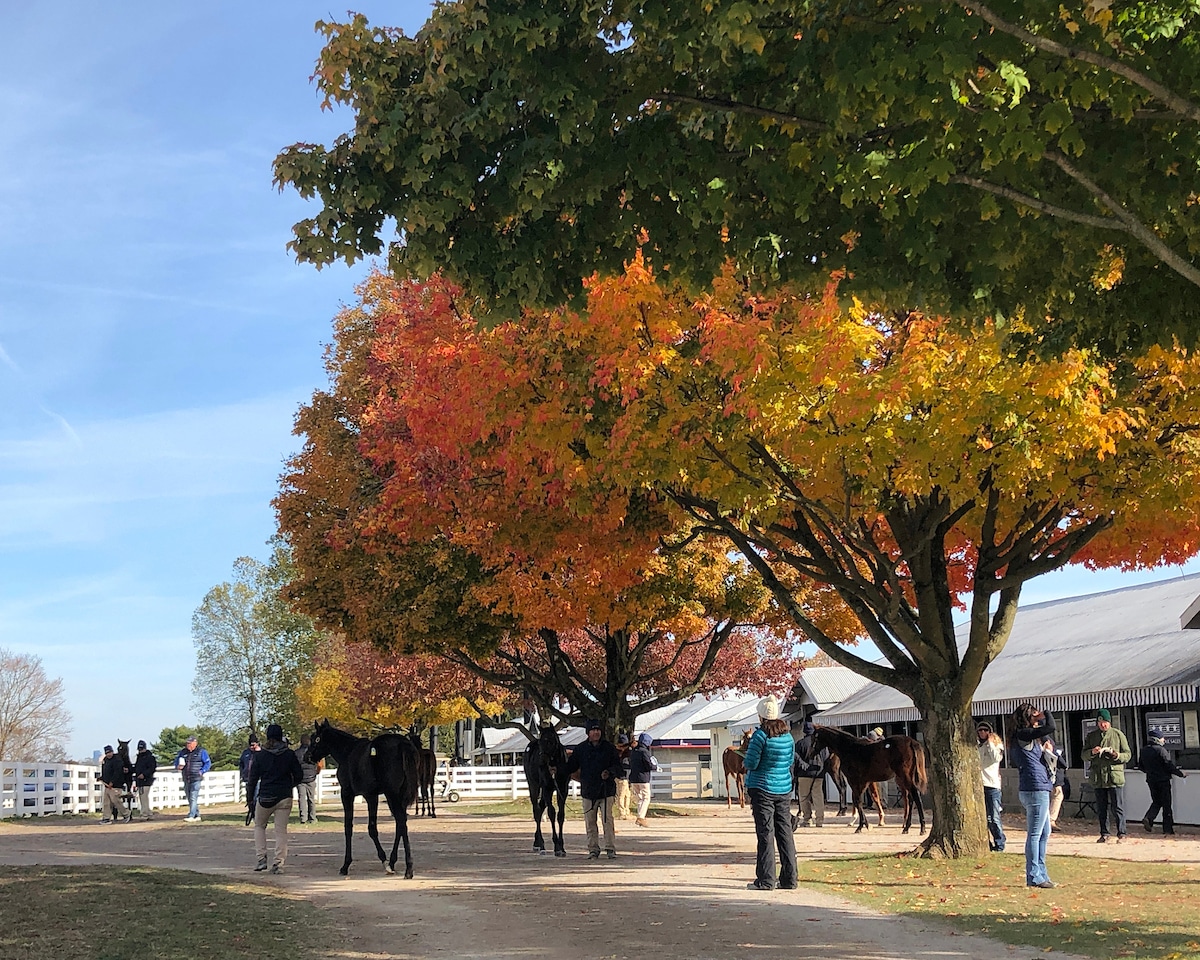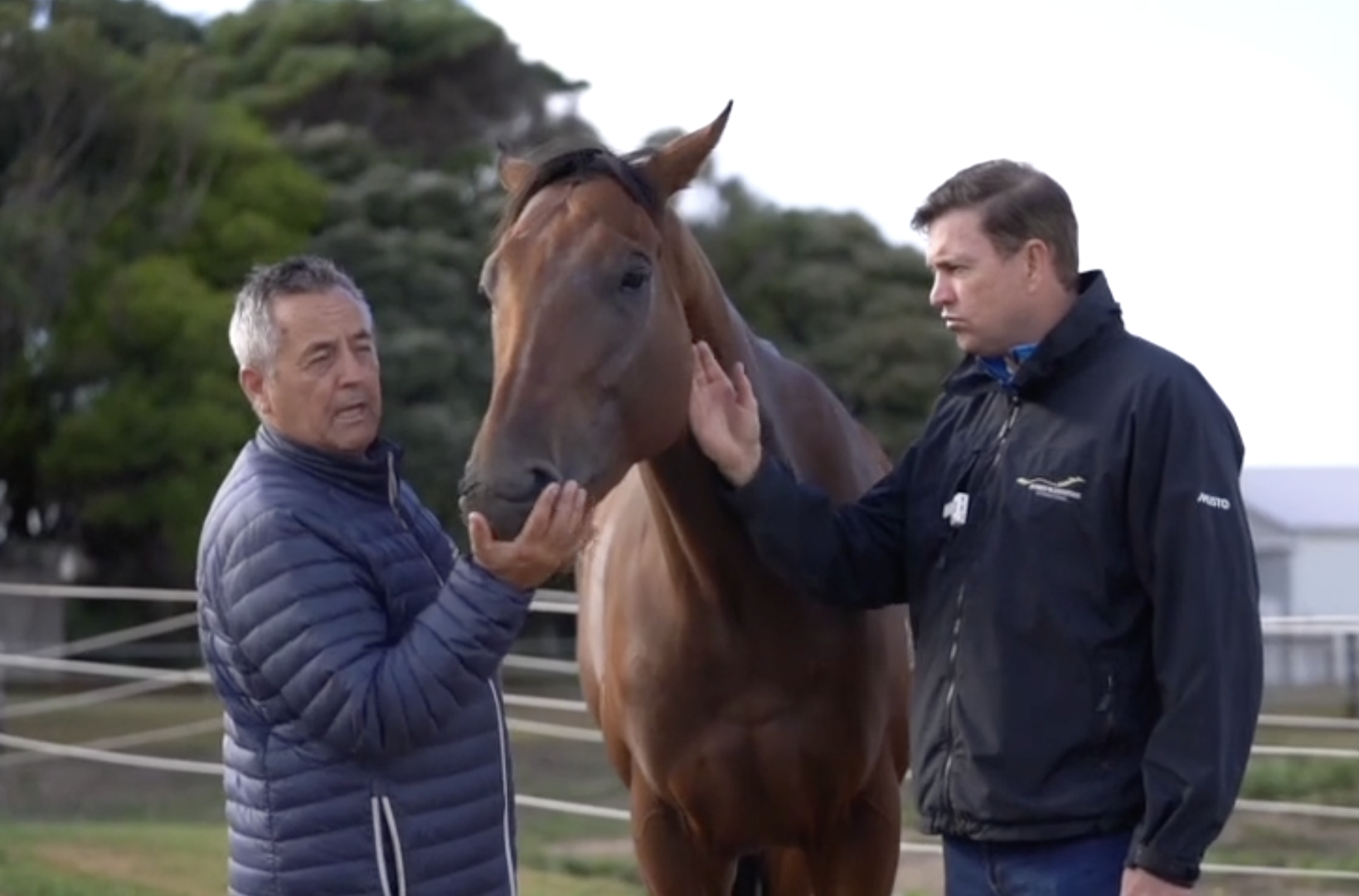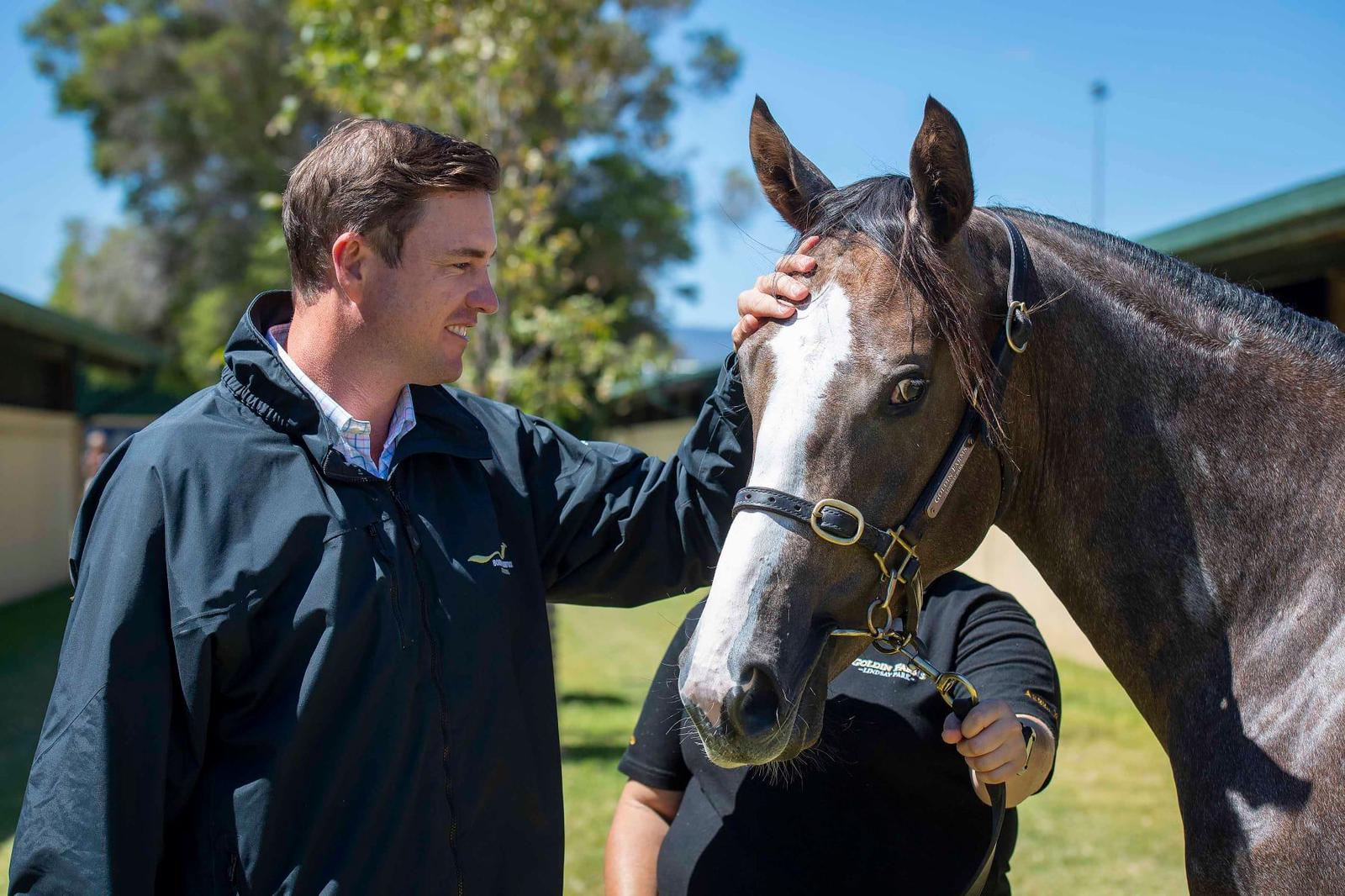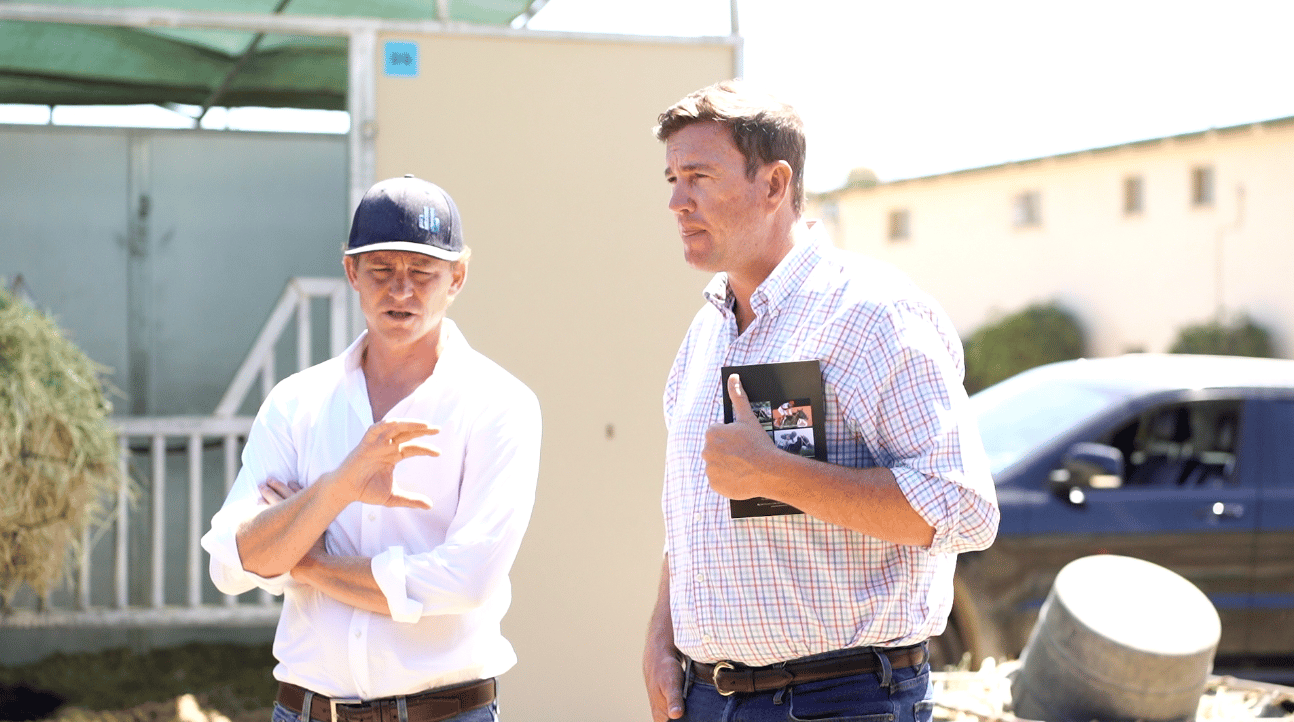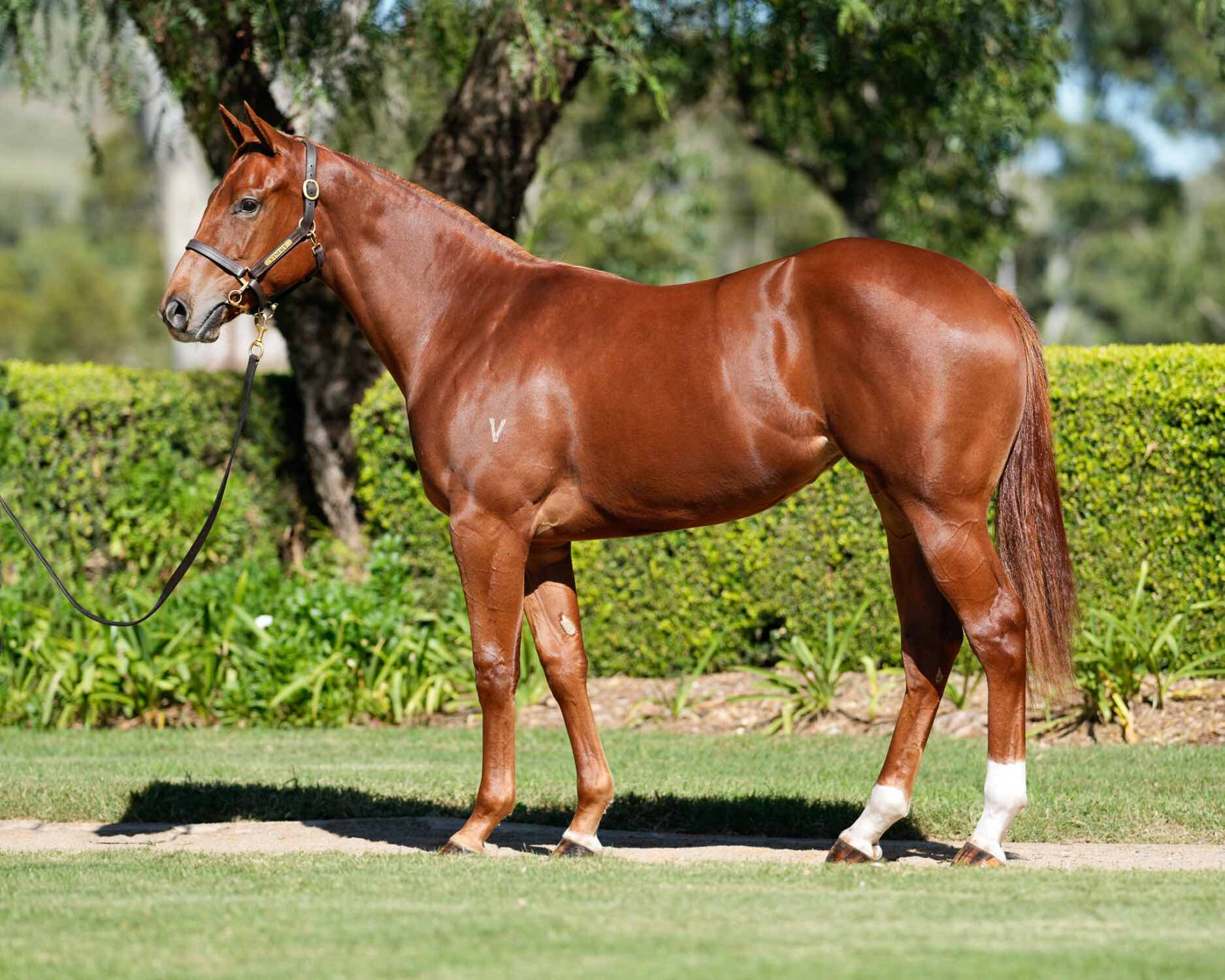
The catalogue page is curated by the vendor to bring the best information possible on the horse to the buyer – with that in mind, a catalogue page is essentially a marketing document.
When you start at the top of the page you have the following information:

Vendor – The name of the farm who is selling the horse – they often will have raised and prepared it for sale. The first few years are extremely important in the development of a young horse so it’s important to know this information as each farm has different levels of success.
Lot number – The number identifying the horse, appearing on its hip and the order in which it will be sold in the ring.
Barn number – The barn in which the vendor and horse is located.
Colour and Sex – Certain breeds and stallions will produce colour dominant horses, for example, a lot of a good stallion’s horses might be bay.
Foaling date – While the date of birth isn’t as important when inspecting broodmares, it is useful to know when looking at young stock such as weanlings and yearlings. It will help you decide if a horse is going to be a small type or if it is just a few months younger than its counterparts.
Brand – Identifies who the breeder of the horse is.
As you come down the page you have details on the stallion and dams:
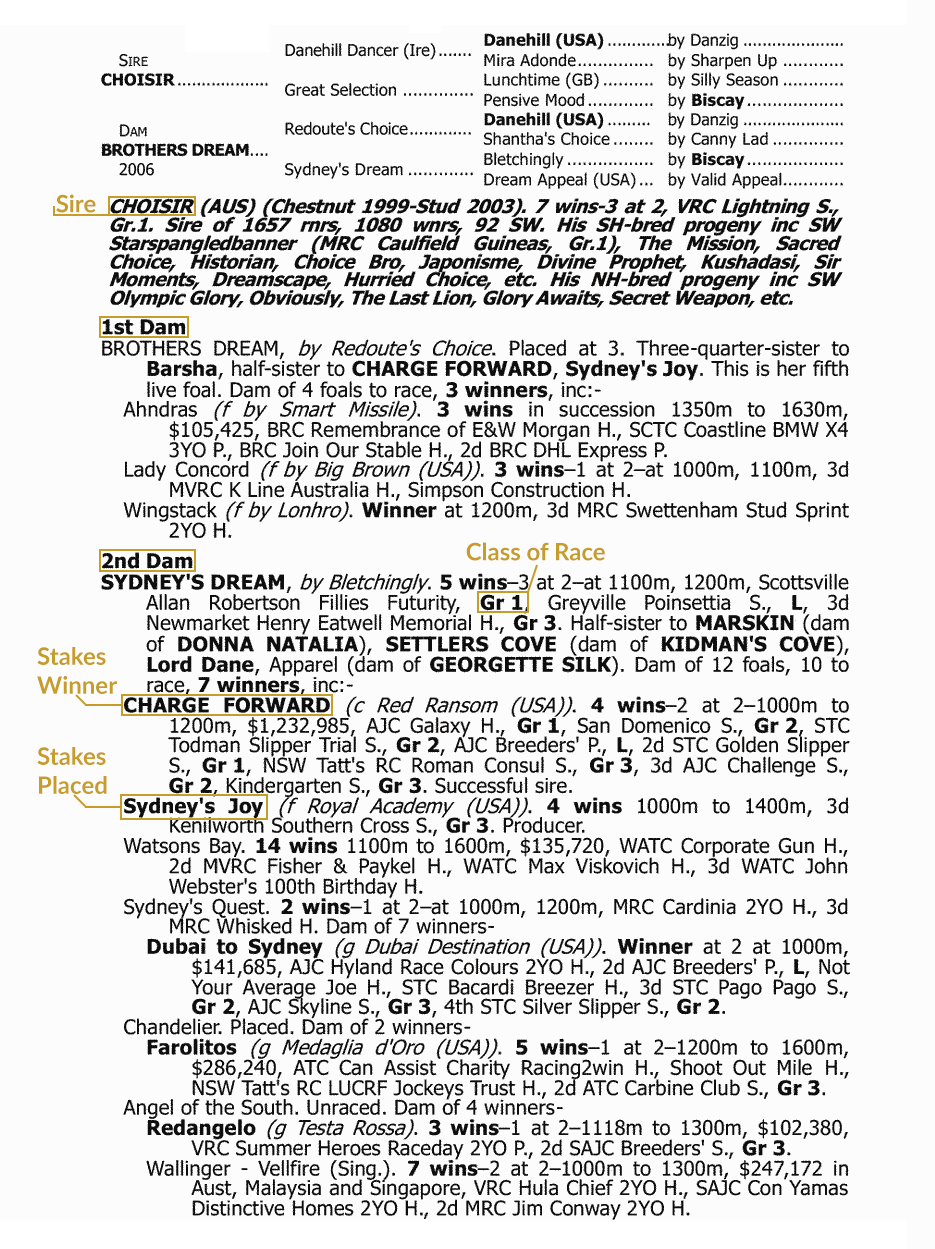
Sire – Information such as the races he won, any awards he received, the number of winners and stakes winners he has sired and any notable progeny at the time of the catalogue going to print.
1st Dam – The maternal mother, along with information such as the races she won, any awards she received, how many foals she has had and what they have achieved themselves.
2nd Dam – The maternal grandmother, along with a synopsis of her race record and notable progeny. Each indentation represents one generation.
3rd Dam – The maternal great-grandmother.
If the first dam has produced a strong family, her progeny and the good horses they have produced will fill a lot of the catalogue page. This is why sometimes you will see a page that has only one or two dams listed as opposed to a page that has four dams listed.
Bold capital letters for a horse’s name indicate the horse is a stakes winner. If its name appears in bold lowercase than the horse is stakes placed.
It’s important to keep in mind that a catalogue page is only one resource of information about a horse – there is much more information to be found that’s not on the page and it will help you to make a better-informed decision.
Check out the “Buying and Selling” section of my site to learn about what research I undertake before purchasing a horse.

